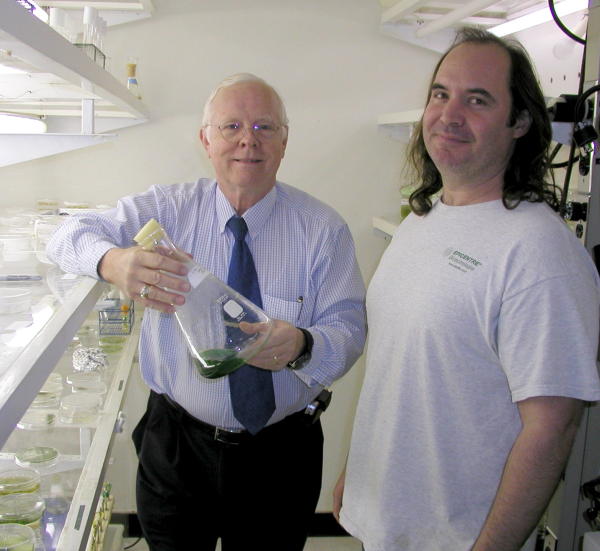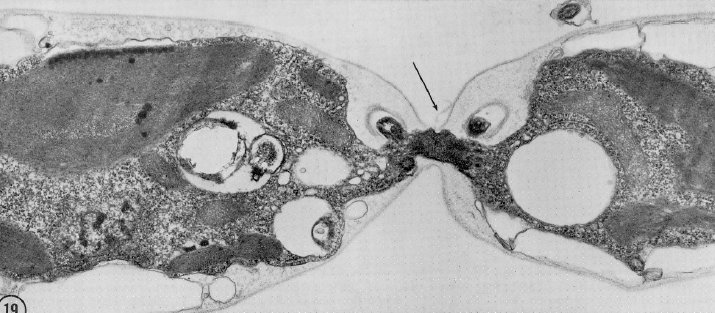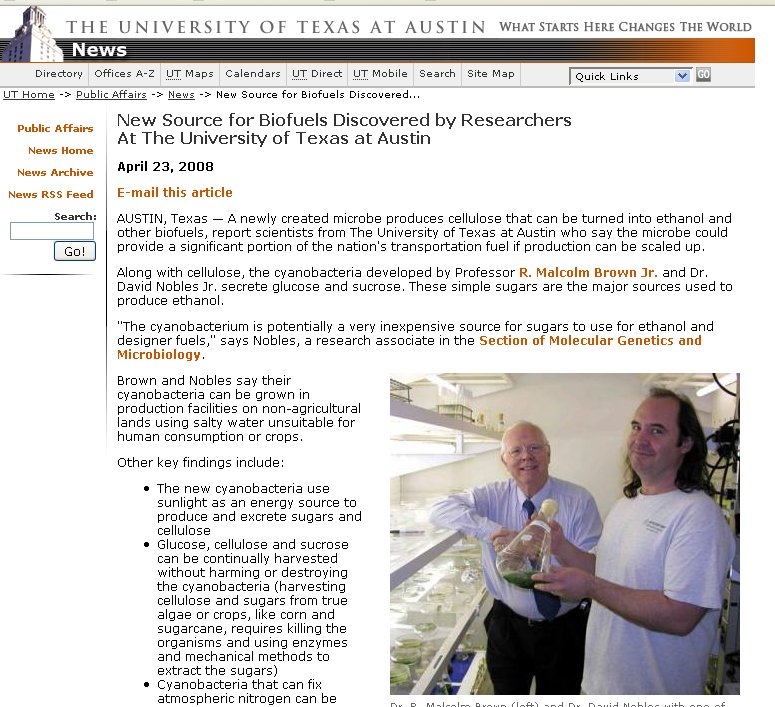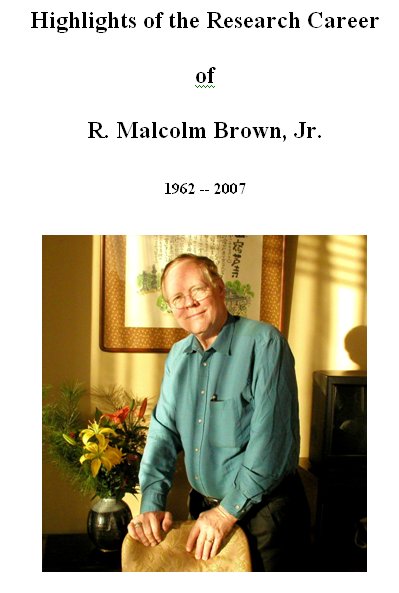The R. Malcolm Brown Jr. Laboratory
for Cellulose and Biofuels Research*

R. Malcolm Brown, Jr. and David R. Nobles, Jr.
Click HERE for a link to our first paper on the discovery of cellulose biosynthesis in the cyanobacteria
Click HERE for the UT April 23 newstory that opened our cyanobacterial research to the world.
Important Links
Department of Molecular Biosciences
School
of Biological Sciences
The University
of Texas at Austin
The University Directory
![]()
|
*Welcome! Changes are in the wind! The Story Welcome to a newly designed, revised, and updated webpage from the R. Malcolm Brown, Jr. Laboratory. First, you will note a change in the naming of our laboratory. Because of many past years of successful research in cellulose, and bringing with it the future of cellulose and saccharides in generating the world's feedstocks for biofuels, fertilizers, food, construction materials, and specialty products, we have decided to rename our laboratory! This laboratory will continue a number of flourishing projects in the areas of atomic and molecular imaging and electronic paper, but it will now focus on cellulose biosynthesis, cellulose structure, saccharides, feedstocks, biomass, and biofuels. We believe that we are uniquely equipped to expand upon many years of expertise in cellulose-based research and apply this knowledge to the truly urgent needs for our planet. Who would have believed ten years ago that cellulose would be playing such an important role in biofuels development!
Combining RM Brown's extensive experience with algae, cyanobacteria, and cellulose , we plan to develop and build one of the world's most innovative research and development labs to bring the fruits of this research to help reduce global climate change, to feed a needy world, and to develop a sustainable energy source for everyone. We subscribe to the Trieste Declaration of Human Duties. One of the key provisions of this Declaration is to avoid energy waste and work for reduction of the use of fossil fuels and to promote the use of inexhaustible energy sources, representing a minimum of environmental and health risks. Toward this goal, we believe that photosynthetic microbes, particularly the prokaryotic "cyanobacteria" (sometimes described as "blue-green algae") will be the future workhorses for sustainable production of biomass. Cellulose is the most abundant macromolecule on earth with some 1011 tons of biomass produced each year on the planet. With this almost incomprehensible quantity of matter made by photosynthesis from carbon dioxide fixation, cellulose simply cannot be ignored as a major player for our sustainable energy future. |
|
A background of accomplishments in the field of cellulose biosynthesis, structure, and molecular biology including:
|
![]()
We are now prepared to research the best possible strains of photosynthetic microbes that will become the top prospects for massive scaleup leading to the engineering of sustainable feedstocks for biofuels. To learn more about our goals, please send an email to: rmbrown@mail.utexas.edu to obtain our White Paper entitled
click on icon above for a brief excerpt of the White Paper
The Future of Biofuels in Renewable Energy and Reduction of Global Warming
Stay tuned and follow our progress!
![]()
Links on Algae, Organizations, Databases, Companies and their relationship to biofuels
![]()
Here are several recent news story links and video interviews:
![]() The
Original UT News Story on Cyanobacteria as new sources for biofuel feedstocks
April 23,
2008
The
Original UT News Story on Cyanobacteria as new sources for biofuel feedstocks
April 23,
2008
![]() Video
Interview in May, 2008 by UT-Austin- this video explains in about 4 minutes
the major goals of our intended research with cyanobacteria
Video
Interview in May, 2008 by UT-Austin- this video explains in about 4 minutes
the major goals of our intended research with cyanobacteria![]()
![]() Video Interview in May, 2008 by Austin TV station KXAN
Video Interview in May, 2008 by Austin TV station KXAN
![]()
Visit HERE to view the Professional Highlights of RMB's Career
![]()
Hot News and Features from the R. M. Brown Jr. Lab
![]()
Here is the MAJOR DIRECTORY for the R.M. BROWN, JR. LAB
![]() Email Contacts-Personnel in
the R. M. Brown, Jr. Laboratory
Email Contacts-Personnel in
the R. M. Brown, Jr. Laboratory
![]() RMB Publication List(1962-2008)
RMB Publication List(1962-2008)
![]() Professor Brown's Bio 323L/Bot 393L Class Pages
Professor Brown's Bio 323L/Bot 393L Class Pages
![]() Movies
and 3-D Imaging Projects From The Brown Lab
Movies
and 3-D Imaging Projects From The Brown Lab
(Exciting research using the TEM at atomic and molecular levels of resolution)
![]() Seminal Presentations from the
RM Brown Jr Lab
Seminal Presentations from the
RM Brown Jr Lab
and
Projects from the RM Brown Jr. Laboratory
![]() Professor Brown's Personal Homepage
Professor Brown's Personal Homepage
![]() Information
On RMB Lab Group Members
Information
On RMB Lab Group Members
(Includes section on past lab associates.)
![]() Research
Support Acknowledgements
Research
Support Acknowledgements
(Take a walk through Painter Hall!)
![]()

![]()
Comments? We would like to hear from you! Email Here!
The background of this page is a cellulosic scale synthesized in the Golgi apparatus of the marine alga, Pleurochysis scherfelii (Photo- courtesy Dr. Dwight Romanovicz)
Updated June 16, 2008 by R. Malcolm Brown, Jr.







